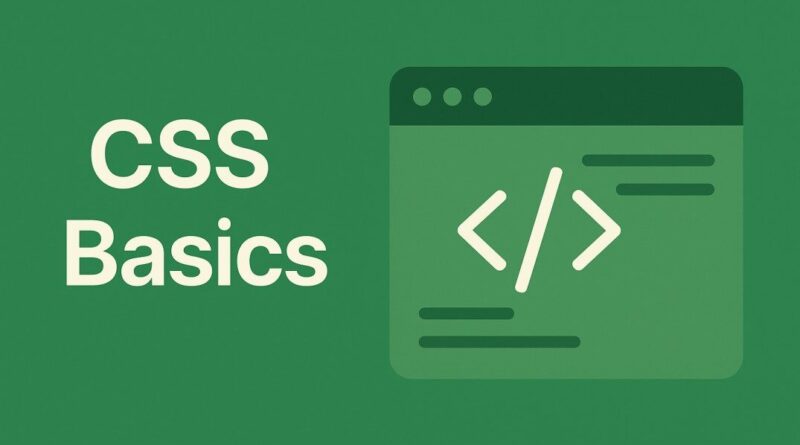CSS – Unlocking CSS Magic: Dive Deep with Pseudo-Classes and Pseudo-Elements!
Unlocking CSS Magic: Dive Deep with Pseudo-Classes and Pseudo-Elements!
Hey there, web design enthusiasts and aspiring coding wizards! Ever wonder how some websites seem to magically react to your mouse, style the very first letter of a paragraph, or highlight an input field when you click on it? The secret sauce often lies in two incredibly powerful, yet sometimes overlooked, CSS features: Pseudo-classes and Pseudo-elements.
These aren’t your everyday selectors; they’re like special agents in your CSS toolkit, allowing you to target elements based on their state or even create virtual elements that don’t exist in your HTML. Mastering them will not only make your stylesheets more efficient but also elevate your user experience from good to absolutely captivating.
Let’s demystify these powerful concepts and see how they can transform your web projects!
Pseudo-Classes: Reacting to User Interaction and Structure
Think of pseudo-classes as conditional selectors. They let you apply styles to an element when it’s in a specific state, or based on its position within the document structure. This opens up a world of dynamic and interactive possibilities!
Common and Incredibly Useful Pseudo-Classes:
- :hover (The Classic Interactive Touch): This is probably the most well-known. Ever notice how a button changes color when your mouse glides over it? That’s
:hoverin action!CSSbutton:hover { background-color: #0056b3; /* A darker blue on hover */ cursor: pointer; /* Indicates it's clickable */ }Pro-Tip for Engagement: Use subtle:hovereffects on links, images, and navigation items to give users immediate visual feedback and make your site feel more alive. - :active (The Moment of Click): This pseudo-class styles an element while it’s being activated, typically when you click and hold down your mouse button. It provides a satisfying visual “press” effect.CSS
a:active { color: #ff0000; /* Red when actively clicked */ }Enhance User Experience: Pairing:activewith:hovercreates a complete, polished interaction flow for interactive elements. - :focus (Bringing Attention to Inputs): Essential for accessibility and user guidance! When an input field, button, or link gains focus (either by clicking or tabbing to it),
:focuskicks in.CSSinput:focus { border: 2px solid #28a745; /* Green border on focus */ box-shadow: 0 0 5px rgba(40, 167, 69, 0.5); /* Subtle glow */ }Accessibility Boost: Always provide clear:focusstyles. It helps users who navigate with keyboards understand exactly where they are on your page. - :first-child (Targeting the Pioneer): Selects the very first element among its siblings. Perfect for applying unique styles to the initial item in a list or a series of paragraphs.CSS
ul li:first-child { font-weight: bold; /* Make the first list item bold */ }Visual Hierarchy Tip: Use:first-childto subtly emphasize the beginning of a content block. - :nth-child(n) (Precise Structural Control): This is incredibly powerful for targeting specific elements based on their position.
ncan be a number,odd,even, or a formula like2n(every second child) or3n+1(every third child starting from the first).CSSp:nth-child(even) { background-color: #f8f9fa; /* Light background for even paragraphs */ } li:nth-child(3) { color: purple; /* Make the third list item purple */ }Design Pattern Power::nth-child()is fantastic for creating striped tables, grid layouts with alternating styles, and visually distinct elements within repeating patterns. - :not(selector) (Excluding Elements): This handy pseudo-class allows you to select all elements except those that match the provided selector.CSS
a:not(.button) { text-decoration: none; /* Remove underline from all links except those with class 'button' */ }Refine Your Selections: Use:not()to fine-tune your styling rules and avoid over-specifying classes in your HTML.
Pseudo-Elements: Crafting Content and Styling Within Elements
Unlike pseudo-classes, pseudo-elements allow you to style parts of an element or even insert generated content that isn’t directly in your HTML. They’re prefixed with :: (though a single : usually works for backward compatibility, :: is the modern standard).
Essential Pseudo-Elements for Creative Control:
- ::before (Adding Content Before): Creates a “virtual” element before the content of the selected element. It’s often used with the
contentproperty to insert icons, decorative text, or other visual cues.CSSh2::before { content: "✨ "; /* Add a sparkle emoji before H2 headings */ margin-right: 5px; }Creative Applications: Think breadcrumbs, decorative bullets, or even custom tooltips without cluttering your HTML. - ::after (Adding Content After): Similar to
::before, but inserts content after the selected element’s content. Great for clearfixes, decorative underlines, or closing icons.CSSa::after { content: " →"; /* Add an arrow after links */ font-size: 0.8em; vertical-align: middle; }Powerful for UX: Use::afterto add visual indicators, like external link icons, that improve user comprehension. - ::first-line (Styling the Opening Line): Allows you to apply styles specifically to the first line of text within an element. The actual number of characters on the first line will vary depending on the screen size and font.CSS
p::first-line { font-variant: small-caps; color: #888; }Typographic Flair: Perfect for giving your paragraphs a distinguished, article-like feel. - ::first-letter (Highlighting the Initial Character): Styles the very first letter of a block of text. Often used to create “drop caps” or visually emphasize the start of a section.CSS
p::first-letter { font-size: 2.5em; font-weight: bold; float: left; margin-right: 0.1em; line-height: 1; color: #007bff; }Elegant Design Touch: A classic publishing technique that adds a touch of sophistication to your textual content.
Best Practices for Leveraging Pseudo-Classes and Pseudo-Elements
To truly harness the power of these advanced CSS concepts, keep these best practices in mind:
- Semantic HTML First: While pseudo-elements can add content, they should not be used to insert content that is crucial for understanding the page’s meaning. Always prioritize good, semantic HTML. Pseudo-elements are for decorative or supplementary content.
- Keep it Accessible: Ensure that any styling applied with pseudo-classes (especially
:focus) enhances accessibility rather than hinders it. Test your site with keyboard navigation. - Performance Considerations: While generally efficient, avoid overly complex
:nth-child()selectors on very large DOMs, as they might have a minor performance impact. For the vast majority of websites, this won’t be an issue. - Clarity in Code: Use clear and descriptive names for your classes. When using pseudo-classes and pseudo-elements, ensure the purpose of the styling is evident.
- Browser Compatibility: While modern browsers offer excellent support, always be mindful of older browser compatibility if your audience requires it. Can I Use… is your best friend!
- Embrace Creativity: Don’t be afraid to experiment! Pseudo-classes and pseudo-elements offer immense creative freedom to add subtle animations, visual cues, and unique design elements without bloating your HTML.
Elevate Your Web Development Skills!
Pseudo-classes and pseudo-elements are more than just CSS tricks; they are fundamental tools for crafting dynamic, interactive, and visually stunning web experiences. By understanding how to apply styles based on state and how to inject or manipulate visual parts of an element, you’ll unlock a new level of control over your designs.
So, go forth and experiment! Play with :hover on your navigation, add some sparkle with ::before, and refine your forms with :focus. Your users (and your clean HTML) will thank you for it!
What are your favorite ways to use pseudo-classes and pseudo-elements? Share your insights and creative examples in the comments below!




